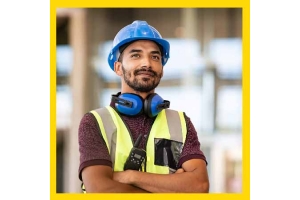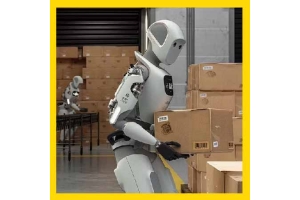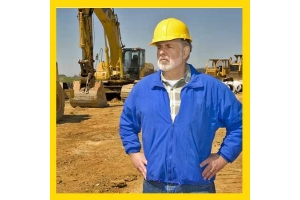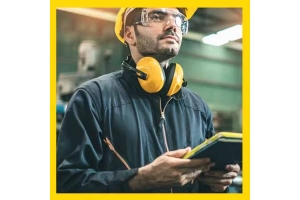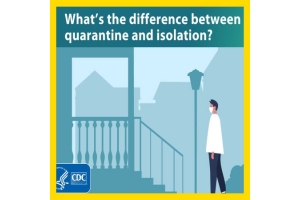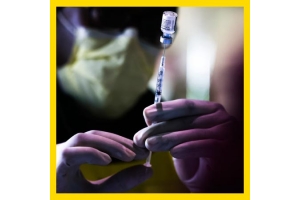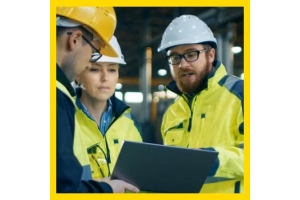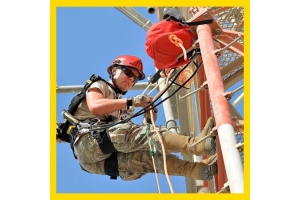Currency
-
December 29, 2022Ask any safety professional what drives or motivates them to get out of bed in the morning and you’ll probably get 1,000 different answers. Some people may be motivated by their experience working in the industry, some may be motivated by combat experience, some may be motivated by their desire to help people and some may be motivated by money; the point is, we’re all motivated by something. While it’s great to know what motivates you, it’s even more important to ask yourself, “what impact do I want to make today?”
As someone who spent over a decade working as a paramedic on the streets, I’ve seen and dealt with many catastrophic injuries and illnesses that resulted from unsafe conditions and unsafe behaviors. These were horrible experiences, but these experiences are what made an impact in my life and motivated me to get into safety. The thoughts “what if I could be -
December 29, 2022Some research studies have found a significant positive correlation between employee engagement and safety outcomes. These findings indicated that engaged employees were five times less likely than non-engaged employees to have a safety-related incident and seven times less likely to have a lost-time incident. The average cost of a safety incident was six times lower for engaged employees compared to non-engaged ones.
Gallup conducted a global study of over 1.8 million employees and found that organization with workers in the top quartile of engagement had 70% fewer incidents than those in the bottom quartile. So engaged employees not only have fewer incidents but those that do occur are significantly less costly and more than likely allows workers to get back to work far more quickly.
Engagement and construction .
In reality -
December 29, 2022There are five generations represented in today’s workforce, each with their own values and attitudes – and they all need safety training. But why should you take each generation into consideration for your safety training?
Making sure everyone is engaged is essential because an engaged environment is a safe environment. Research shows that 70% fewer safety incidents occur in engaged workplaces.
Focus areas
The core question is: Do generational differences really matter when it comes to training? The answer is a resounding yes.
Here’s why: When it comes to training and development, each generation has a different focus.
- The Traditionalist Generation (1925-46) is looking for career longevity, so this generation will say, “What skills will sustain me at this organization?”
- The Baby
-
December 29, 2022On November 28, the National Institute for Occupational Safety and Health (NIOSH) asked for public comment on its program for certifying approved respiratory protection devices.
NIOSH is authorized by the Occupational Safety and Health Act of 1970 and Mine Safety and Health Amendments Act of 1977 to test and approve respirators used by construction workers, miners, painters, asbestos removal workers, fabric mill workers, firefighters, and other workers. The Environmental Protection Agency (EPA) and Nuclear Regulatory Commission (NRC) also require the use of NIOSH-approved respirators.
The institute separately tests respirators used in health care under a memorandum of understanding with the Food and Drug Administration (FDA).
Respiratory protection manufacturers apply for NIOSH approval using the Standard Application Form for the Approval of Respirators -
December 07, 2022"Is it really that loud?" Many of us have been taken aback by warnings from our devices that urge us to turn down our headphones even though the volume is hardly ear-splitting.
But don't be surprised—noise doesn’t have to be piercingly loud to cause permanent hearing damage. According to the Centers for Disease Control and Prevention (CDC), over a prolonged time period, a person's hearing can be harmed by sounds over 70 decibels. That's about as loud as a washing machine or a dishwasher. Louder sounds cause damage more quickly.
When your headphones can be hazardously loud without your realizing it, it's easy to understand how noise hazards in the workplace can go unnoticed, too. According to a study published by the Journal of the Acoustical Society of America, approximately 22 million workers are exposed to occupational noise hazards in their jobs today, and one-third of workers who have a history of occupational noise exposure show measurable hearing damage. -
December 07, 2022Iowa City, IA — Organizations seeking better safety results should adopt a more precise accounting system, a group of international researchers suggests.
The researchers looked at establishment-level injury data from OSHA for around 1,300 firms. They also relied on other measures to gauge the level of information quality in accounting statements, including the accuracy of earnings forecasts and error-driven restatements.
Findings show that better information quality was linked to “significantly lower” rates of workplace injuries. In the organizations in which decision-making more often comes from their branches than headquarters, the association was stronger.
“High information quality can increase the awareness of managers and stakeholders to workplace safety and thus motivate them to improve safety,” study co-author Danye Wang, an assistant -
December 07, 2022Washington — OSHA is accepting nominations for its Advisory Committee on Construction Safety and Health.
The committee advises the Department of Labor and OSHA on upcoming standards affecting the construction industry and “the administration of safety and health provisions” in the Construction Safety Act of 1969.
ACCSH consists of 15 members who are appointed by the labor secretary. All but one of the current members’ terms are set to expire May 14, according to OSHA. G. Scott Earnest, associate director of the NIOSH Office of Construction Safety and Health, has an indefinite term.
Of the 14 other members, five are employer representatives, five are employee representatives, two are public representatives “qualified by knowledge and experience to make a useful contribution to the work of ACCSH,” and two are from state governments.
-
December 07, 2022Safety is important in any field, but the stakes are particularly high for construction. Case in point: fall protection was the most commonly cited OSHA violation in 2021.
Most construction leaders recognize the dangers of their profession – and how inadequate safety training contributes to that danger. But establishing a comprehensive training program isn’t easy, especially with a cross-generational workforce.
Here, I’ll share four ways you can optimize your training for the latest generation that’s joined the workforce (Gen Z) and how doing so can improve the level of safety at your construction site.
1. Make your lessons bite-sized
A now-famous study from 2017 revealed that today’s employees are only able to dedicate around one percent of their time, or 24 minutes per week, to learning and development. And while Gen
